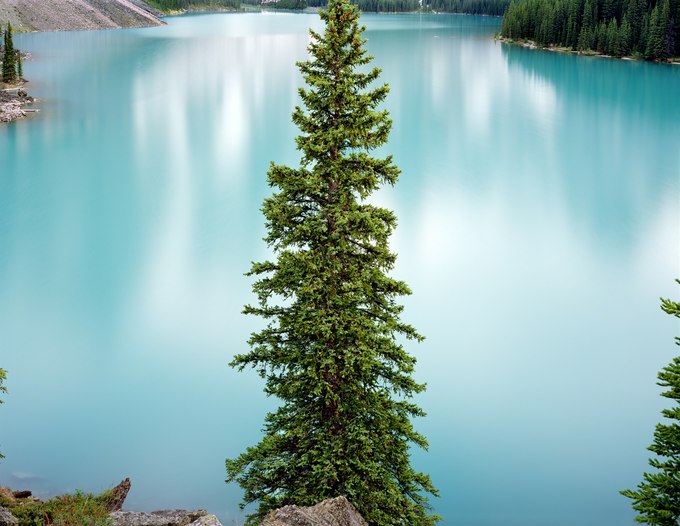Moraine Lake was eerily still when this photograph was taken on the evening of the summer solstice, just before midnight. The snow-covered slopes of the Canadian Rockies surrounding it were faintly mirrored on its surface, their reflection partially absorbed by the translucent water. The lake appeared otherworldly, emanating an unnaturally radiant glow in the enduring twilight that replaced night at this high latitude as it began transitioning into the next day’s dawn.
The glacially-fed lake reaches its highest level in late June, and when full, it iridizes a stunning azure blue. This unique color arises from refracted light off the rock flour, the dust sheared from glacial debris while suspended in the lake. Composed of silt-sized particles of quartz and feldspar, these particles are small and light enough to remain buoyant when the water maintains a consistent temperature of around 40 degrees. At this temperature, the water is most viscous, supporting the suspension of rock flour much longer than if the water were warmer or colder.
Named by Walter Wilcox in 1899 while mapping the Canadian Rockies, he wrote of Moraine lake, "No scene had ever given me an equal impression of inspiring solitude and rugged grandeur.” Later, it became clear that the lake was not formed by depositing a terminal moraine from an ancient glacier. Instead, a large, haphazardly piled hill of rocks and boulders dammed the lake as a result of one or more landslides, either transported to this location atop a glacier or, more likely, slid down from the Tower of Babel, a nearby peak. This accumulation of stones rose so high that it provided an elevated view of the lake.

